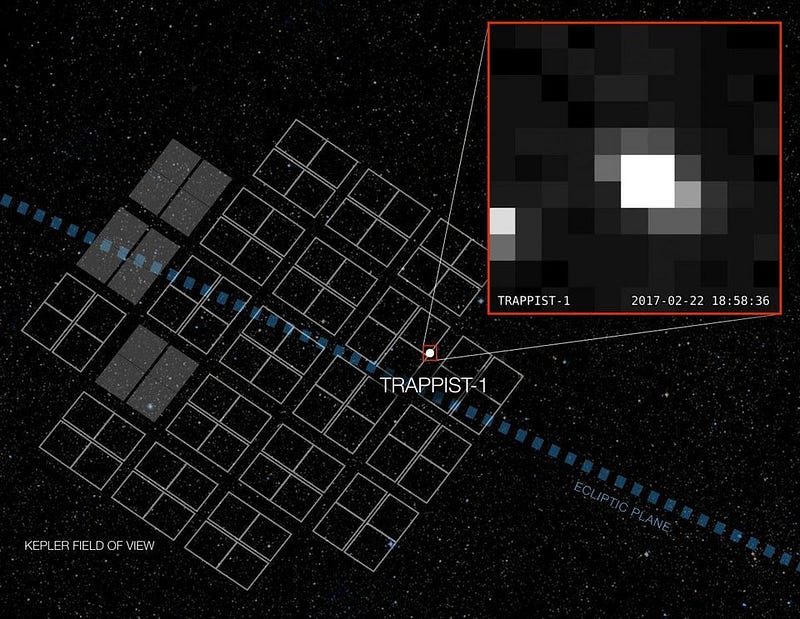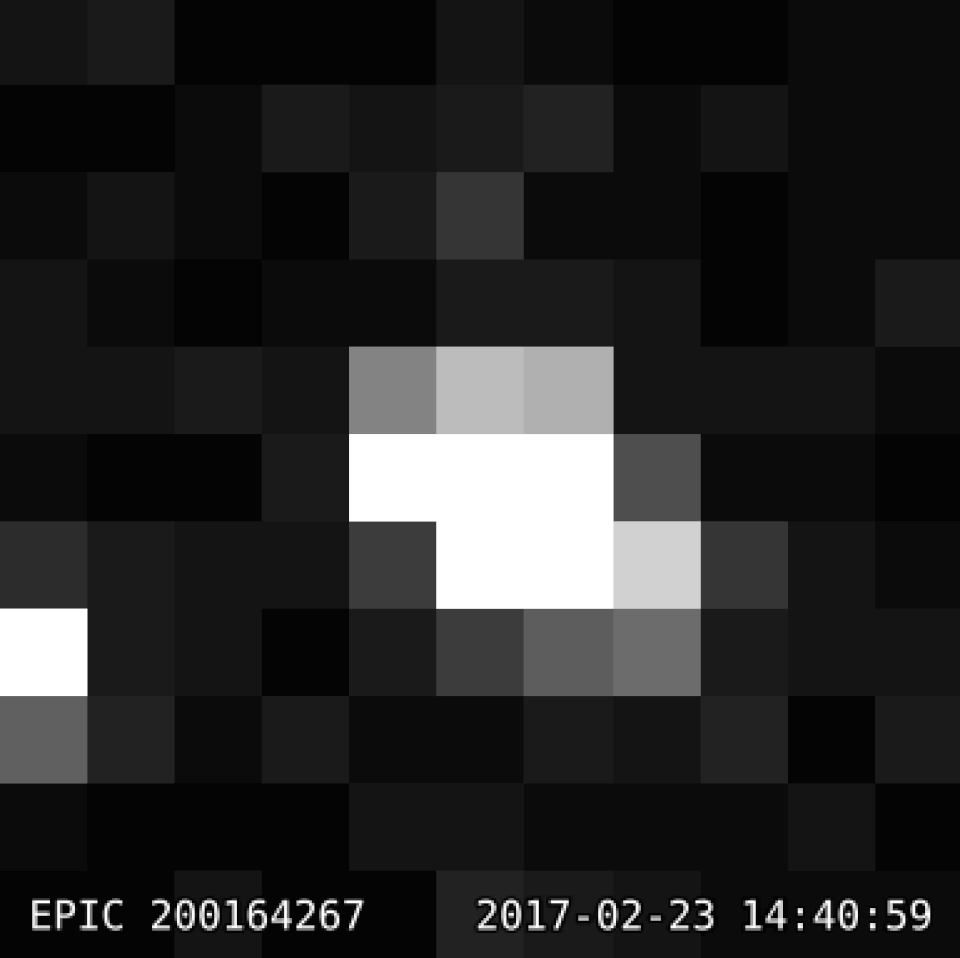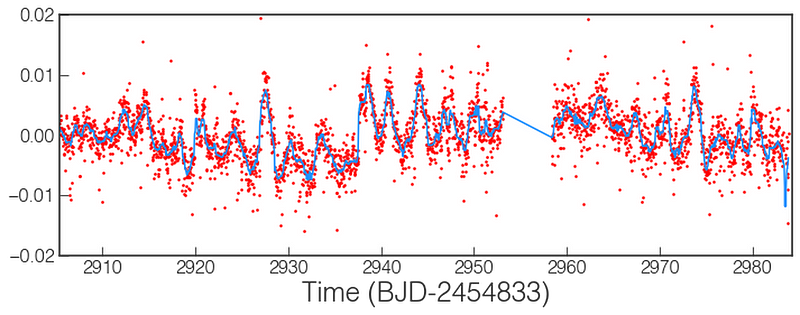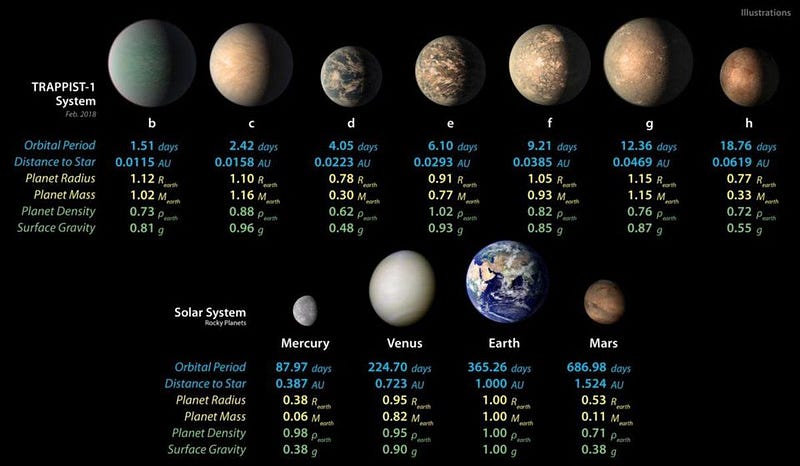Our milky way has 400+ billion stars and now we know each of the stars has several planets orbiting the star. Technology has reached a stage where a slight drop in a star's luminance is enough to tell a lot about the transiting planet. But how is this possible?
Source: https://medium.com/starts-with-a-bang/nasa-keplers-scientists-are-doing-what-seems-impossible-turning-pixels-into-planets-43fc0ee57ac2
The Kepler telescope has discovered a solar system called Trappist-1. This is what the star looks like. Note that no planets are seen as yet in this picture.

The same spot is imaged continuously for weeks and months and this is what is seen ( a very long animation of raw data)

The continuously changing lights points to several planets orbiting the star.
The light curve shows at least 6 planets

There are sinusoidal (periodioc up-and-down) patterns, which tell you there are sunspots on the main star: some portions of the star are fainter than average. Also, there are a few big dips in the total amount of light in the long-cadence data, where between 0.5% and 1% of the light is temporarily blocked/dimmed over the course of approximately 30 minutes.
The final data confirms the existence of 7 planets (at least what can be observed from here)

This gives us all the information we need to deduce many of the properties of these worlds.
When you put all of this together, here’s how these worlds look, compared to the inner, rocky worlds of our own Solar System.

Amazing... is it not? And the star system is 40 light years away from earth! You can read about the Trappist-1 solar system here.
Source: https://medium.com/starts-with-a-bang/nasa-keplers-scientists-are-doing-what-seems-impossible-turning-pixels-into-planets-43fc0ee57ac2
The Kepler telescope has discovered a solar system called Trappist-1. This is what the star looks like. Note that no planets are seen as yet in this picture.

The same spot is imaged continuously for weeks and months and this is what is seen ( a very long animation of raw data)

The continuously changing lights points to several planets orbiting the star.
The light curve shows at least 6 planets

There are sinusoidal (periodioc up-and-down) patterns, which tell you there are sunspots on the main star: some portions of the star are fainter than average. Also, there are a few big dips in the total amount of light in the long-cadence data, where between 0.5% and 1% of the light is temporarily blocked/dimmed over the course of approximately 30 minutes.
The final data confirms the existence of 7 planets (at least what can be observed from here)

This gives us all the information we need to deduce many of the properties of these worlds.
- Because we know the size and brightness of the star, we can deduce the radius of each transiting world.
- Because we know the mass of the star and how orbits work, we can figure out the distance of each planet from the star.
- Because we know the temperature of the star, we can figure out which worlds would have the right conditions for liquid water if they had Earth-like atmospheres.
- And because these worlds mutually tug on each other, inducing subtle shifts in one another’s orbits, we can infer what their masses ought to be.
When you put all of this together, here’s how these worlds look, compared to the inner, rocky worlds of our own Solar System.

Amazing... is it not? And the star system is 40 light years away from earth! You can read about the Trappist-1 solar system here.
No comments:
Post a Comment